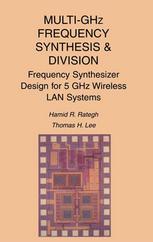

Most ebook files are in PDF format, so you can easily read them using various software such as Foxit Reader or directly on the Google Chrome browser.
Some ebook files are released by publishers in other formats such as .awz, .mobi, .epub, .fb2, etc. You may need to install specific software to read these formats on mobile/PC, such as Calibre.
Please read the tutorial at this link: https://ebookbell.com/faq
We offer FREE conversion to the popular formats you request; however, this may take some time. Therefore, right after payment, please email us, and we will try to provide the service as quickly as possible.
For some exceptional file formats or broken links (if any), please refrain from opening any disputes. Instead, email us first, and we will try to assist within a maximum of 6 hours.
EbookBell Team

5.0
110 reviewsIn the past 10 years extensive effort has been dedicated to commercial wireless local area network (WLAN) systems. Despite all these efforts, however, none of the existing systems has been successful, mainly due to their low data rates. The increasing demand for WLAN systems that can support data rates in excess of 20 Mb/s enticed the FCC to create an unlicensed national information infrastructure (U–NII) band at 5 GHz. This frequency band provides 300 MHz of spectrum in two segments: a 200 MHz(5.15–5.35 GHz) and a 100 MHz (5.725–5.825 GHz) frequency band. This newly released spectrum, and the fast trend of CMOS scaling, provide an opportunity to design WLAN systems with high data rate and low cost. One of the existing standards at 5 GHz is the European high performance radio LAN (HIPERLAN) standard that supports data rates as high as 20 Mb/s. One of the main building blocks of each wireless system is the f- quency synthesizer. Phase–locked loops (PLLs) are universally used to design radio frequency synthesizers. Reducing the power consumption of the frequency dividers of a PLL has always been a challenge. In this book, we introduce an alternative solution for conventional flipflop based xiv MULTI–GHZ FREQUENCY SYNTHESIS & DIVISION frequency dividers. An injection–locked frequency divider (ILFD) takes advantage of the narrowband nature of the wireless systems and employs resonators to trade off bandwidth for power.